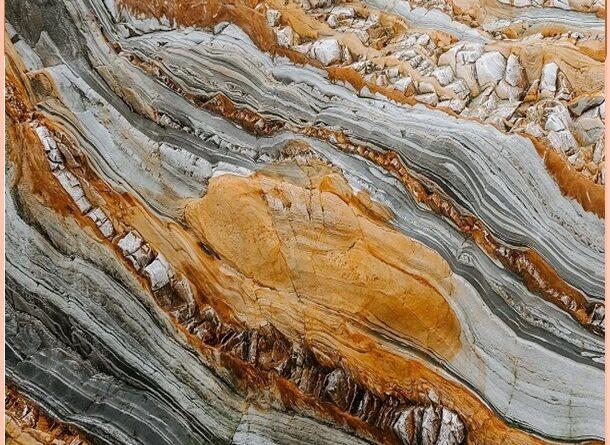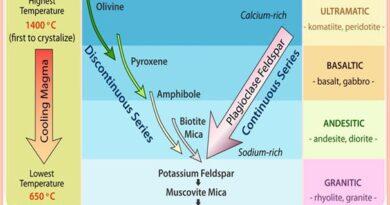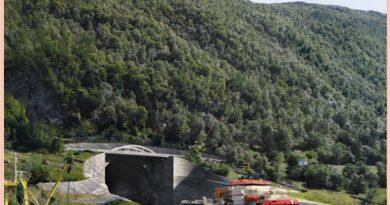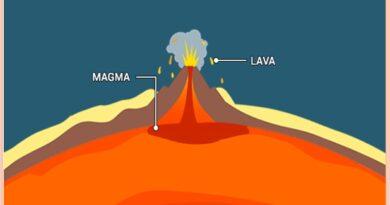What is Zone of Metamorphism or Metamorphic Zones
Introduction
METAMORHISM is the process responsible for all the changes that take place in an original rock under the influence of surrounding conditions such as temperature, pressure, and chemically active fluids. It always involves the partial or complete recrystallization of original rock minerals. There is no order of crystallization. The factors controlling metamorphism are- temperature, pressure, and chemically active fluids. On the basis Above variables Metamorphism can be classified as Thermal metamorphism, Dynamic metamorphism, and Dynamothermal metamorphism or regional metamorphism and Plutonic metamorphism. Some of the important metamorphic rock types are- Phyllite, schist, Gneiss, Marble, Quartzite, and slate.
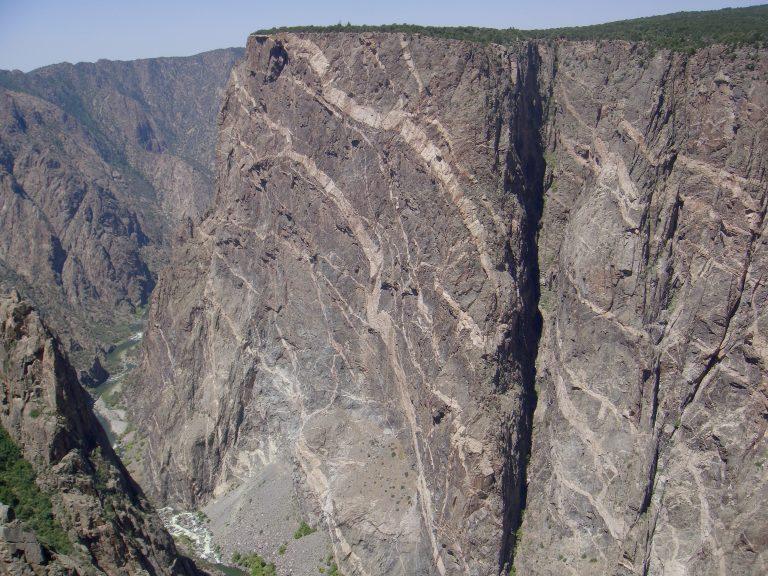
Metamorphic Zones
The grade of metamorphism generally increases with depth because both temperature and pressure factors become strong and stronger at deeper levels within the crust of the earth. This fact has given the opportunity to researchers to study the concept of Metamorphic Zones signifying the range of metamorphic effects at different depths below the surface. You can say that zones indicate depth-wise extension of particular grades of metamorphism in a general way.
The three metamorphic zones are:
- Epizone,
- Mesozone and
- Ketazone.
Epizone-
Epizone is the uppermost zone that is nearest to the earth’s surface and is characterized by mechanical and chemical metamorphism, that constitutes hydrous silicates. Shearing stress is strong and hydrostatic pressure is low in this zone. The temperature is relatively low or moderate (<300 degrees Celsius) and Cataclastic metamorphism is dominant. Typical minerals include-Sericite, chlorite, paragonite, Talc, brausite, Zoicite, antigorite, albite, etc.
Mesozone-
Mesozone is an intermediate zone of chemicals metamorphism. Pressure and temperature are higher than those of the epizone. Temperature ranges from 300-to 500 degrees Celsius. In this zone, Stress is very high or lacks and richest stress minerals found in this zone. It is a zone of thermal or dynamo thermal metamorphism. Typical minerals included are found in this zone are- Biotite, Muscovite, Staurolite, Kyanite, Anthophyllite, Cummingtonite, Grunerite, actinolite, calcite, Brucite, almandine, and Zoicite.
Katazone-
Katazone is the lowermost zone characterized by long-continued chemical recrystallization often accompanied by deformation. In this zone, the hydrostatic pressure and temperature are high while the stress is low. Temperature ranges from 500-to 700 celsius and Plutonic metamorphosis is the characteristic feature of this zone. Typical minerals include- biotite, K-feldspar sillimanite, enstatite, hypersthene, Olivine, omphacite, Hornblende, Jadeite, Garnet, spinel, and periclase.
Barrovian zones (Progressive regional metamorphism)
Barrow 1912 mapped the Daldriadan schist field of the Scottish highlands into a series of zones of progressive regional metamorphism based on mineralogical transformations in derivatives of argillaceous sediments and correlated them in a general way with increasing temperature and pressures. Each zone is defined by an index of minerals the first appearance of which marks the isograd (Line of equal grade of Metamorphism) defining the outer limit of the zone. The zones established by barrow ate the same as those in other parts of the world, except for minor departure due to variation in the chemical composition of parent rocks. The following is the sequence of Barrovian zones with increasing grades of Metamorphism-
Chlorite zone- Biotite zone-Almandine zone (Garnet Zone)-Kyanite zone- Sillimanite zone
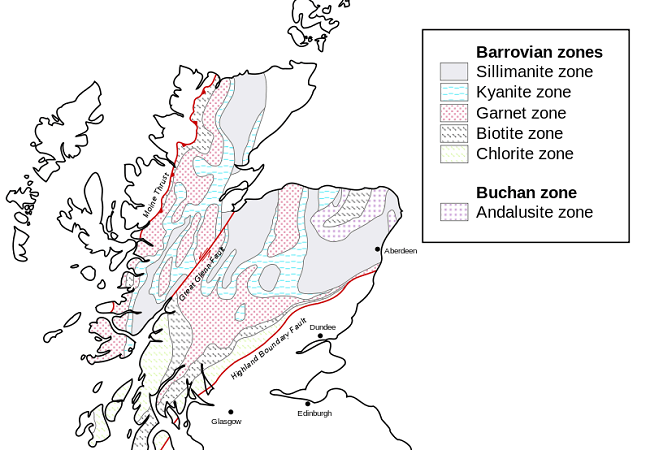
Apart from this, the Original rock has been changed due to metamorphism is expressed by the term metamorphic grade. Three terms are used to express the grades – low grade, medium grade, and high grade. These grades are indicated by the presence of a set of minerals that are called index minerals. These minerals are stable only within the temperature-pressure range considered characteristic of that particular grade. Changes in mineralogical composition in any terrain reflect differences in the metamorphic grade of the rocks. Minerals that are characteristic of a certain metamorphic grade are known as index minerals. The first or last appearance of an index mineral forms an easily recognizable isograd. The increase in the grade of metamorphism is also accompanied by an increase in grain size. For example, slate and phyllites are fine-grained, while schists and gneisses are coarse-grained.
Also, read- The Deadliest-Mont Blanc Mountain range and its Geology
